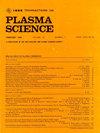Effect of X-Ray Irradiation on Properties of Insulating Materials
IF 1.5
4区 物理与天体物理
Q3 PHYSICS, FLUIDS & PLASMAS
引用次数: 0
Abstract
X-ray digital imaging technology can be used for visualization and nondestructive detection of power equipment, which is widely used in defect determination and anomaly detection. However, when X-ray is used for defect detection of power equipment, it remains to be investigated whether X-ray irradiation will deteriorate the properties of insulating materials or not. In this study, four kinds of insulating materials that are commonly used in power equipment, including alumina (Al2O3), epoxy/alumina (EP/Al2O3) composite material, polyether ether ketone (PEEK), and polyimide (PI), are irradiated with high-penetration and high-dose X-rays. The effects of irradiation time and atmosphere on the properties of insulating materials were studied systematically. The results show that the crystalline structure of inorganic materials and the chemical structure of organic materials are basically unchanged after X-ray irradiation. In terms of insulation properties that include dielectric property, surface flashover voltage, surface potential decay, and volume resistivity, it turns out that the insulation performance of the insulating materials tends to deteriorate after X-ray irradiation, while the degree of degradation is extremely low. In addition, the results of surface potential decay of EP/Al2O3 show that the X-ray irradiation would accelerate the dissipation of surface charge, which is in favor of the safety of power insulation.X 射线辐照对绝缘材料性能的影响
x射线数字成像技术可用于电力设备的可视化和无损检测,广泛应用于缺陷确定和异常检测。然而,当x射线用于电力设备的缺陷检测时,x射线辐照是否会使绝缘材料的性能恶化还有待研究。本研究对电力设备常用的氧化铝(Al2O3)、环氧/氧化铝(EP/Al2O3)复合材料、聚醚醚酮(PEEK)、聚酰亚胺(PI)等四种绝缘材料进行高穿透高剂量x射线照射。系统地研究了辐照时间和气氛对绝缘材料性能的影响。结果表明,经过x射线辐照后,无机材料的晶体结构和有机材料的化学结构基本保持不变。绝缘性能包括介电性能、表面闪络电压、表面电位衰减、体积电阻率等,结果表明,经x射线辐照后,绝缘材料的绝缘性能趋于劣化,但劣化程度极低。此外,EP/Al2O3的表面电位衰减结果表明,x射线辐照会加速表面电荷的耗散,有利于电源绝缘的安全性。
本文章由计算机程序翻译,如有差异,请以英文原文为准。
求助全文
约1分钟内获得全文
求助全文
来源期刊

IEEE Transactions on Plasma Science
物理-物理:流体与等离子体
CiteScore
3.00
自引率
20.00%
发文量
538
审稿时长
3.8 months
期刊介绍:
The scope covers all aspects of the theory and application of plasma science. It includes the following areas: magnetohydrodynamics; thermionics and plasma diodes; basic plasma phenomena; gaseous electronics; microwave/plasma interaction; electron, ion, and plasma sources; space plasmas; intense electron and ion beams; laser-plasma interactions; plasma diagnostics; plasma chemistry and processing; solid-state plasmas; plasma heating; plasma for controlled fusion research; high energy density plasmas; industrial/commercial applications of plasma physics; plasma waves and instabilities; and high power microwave and submillimeter wave generation.
 求助内容:
求助内容: 应助结果提醒方式:
应助结果提醒方式:


